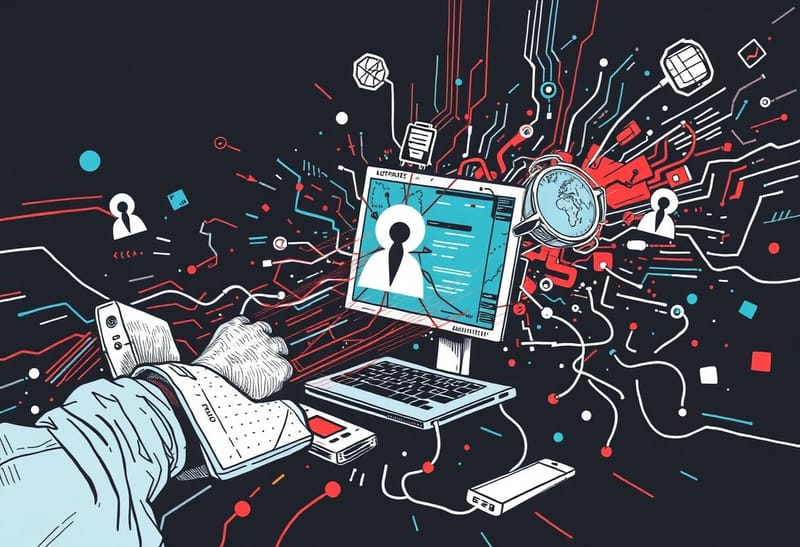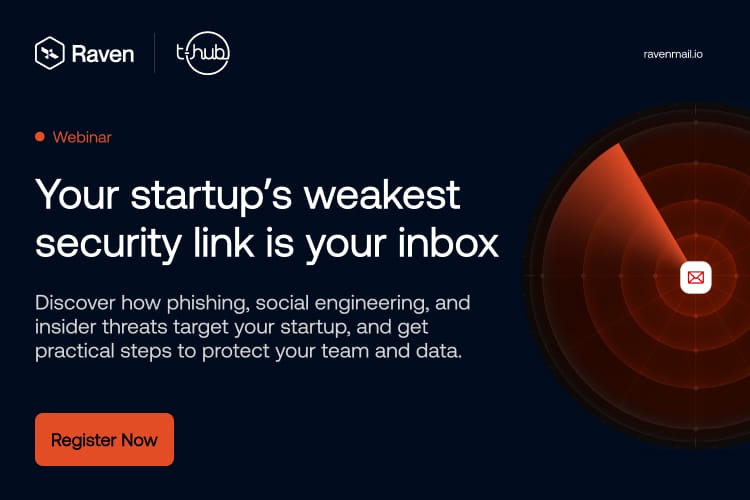Introduction
In an era where cyber threats are evolving at an unprecedented pace, CISOs have increasingly turned to Endpoint Detection and Response (EDR) and Extended Detection and Response (XDR) solutions as their key arsenal in the defense-in-depth strategy. However, recent high-profile attacks, from the SolarWinds supply chain compromise to the Uber data breach, have exposed critical vulnerabilities in this approach, particularly when it comes to email security. This post explores why EDR and XDR solutions, despite their merits, can be evaded by cutting-edge email attacks and why a new approach to email security is crucial.

The Rise of EDR and XDR in Cybersecurity
EDR and XDR represent the evolution of endpoint security beyond simple signature-based detection. EDR focuses on monitoring and responding to threats at the endpoint level, while XDR extends this capability across multiple security layers, including networks and cloud environments [1].
CISOs have embraced these solutions for several compelling reasons:
- Comprehensive visibility across endpoints
- Advanced threat hunting capabilities
- Automated response features
- Integration with other security tools
In the context of email security, EDR and XDR aim to provide a robust defense by monitoring endpoint behavior, analyzing patterns, and quickly responding to potential threats.
The Modern Email Threat Landscape
The email threat landscape has undergone a dramatic transformation in recent years, presenting new challenges that traditional security measures struggle to address. Key developments include:
- AI-enabled attacks: Cybercriminals are leveraging artificial intelligence to create highly convincing phishing emails, deepfake voice and video scams, and sophisticated social engineering attacks [2].
- SaaS phishing:Attackers are exploiting the trust users place in legitimate Software-as-a-Service (SaaS) platforms, leading to account takeover attacks and OAuth-based phishing [3].
- Business Email Compromise (BEC): BEC attacks have become increasingly sophisticated, with attackers using advanced social engineering tactics to impersonate executives or trusted partners [4].
- Supply chain attacks: Cybercriminals are targeting an organization's suppliers or software vendors to gain access to multiple victims through a single compromise [5].
The SolarWinds Supply Chain Attack (2020)
The SolarWinds attack began with a compromised software update from a trusted vendor. This attack was particularly insidious because:
- It bypassed traditional email security filters by using legitimate, compromised accounts.
- The malicious code was inserted into a trusted software update, evading EDR solutions that focus on known malicious patterns.
- Once inside, attackers used internal email addresses to spread laterally, appearing as legitimate internal communications [6].
This attack demonstrated that EDR solutions, focused primarily on endpoint behavior, can miss threats that originate from trusted sources and leverage legitimate processes.
The Uber Data Breach (2022)
The Uber breach showcased the limitations of EDR in combating sophisticated social engineering:
- Attackers used social engineering tactics to compromise an employee's credentials via a phishing attack.
- They then bombarded the employee with push notifications for two-factor authentication, which the employee eventually accepted.
- This attack bypassed EDR by leveraging legitimate authentication processes and user actions [7].
The Uber case highlights how EDR solutions can struggle to differentiate between legitimate user actions and those manipulated by attackers, especially when social engineering is involved.
Limitations of EDR/XDR in Combating Modern Email Threats

These examples, among others, reveal several key limitations of EDR and XDR in the face of modern email threats:
- Focus on endpoint activity: EDR and XDR primarily monitor endpoint behavior and system changes. However, many sophisticated email attacks don't leave significant traces on the endpoint until it's too late.
- Difficulty detecting AI-generated content: These solutions struggle to identify the subtle nuances of AI-generated phishing emails or deepfake content.
- Challenges with SaaS communications: Distinguishing between legitimate SaaS platform communications and malicious phishing attempts is extremely difficult for EDR/XDR systems.
- Reliance on known patterns: While EDR and XDR use advanced analytics, they still largely rely on recognizing known malicious patterns or behaviors, making them vulnerable to novel attack techniques.
- Cloud email blind spots: As more organizations move to cloud-based email systems, EDR and XDR solutions may have limited visibility into these environments.
The Need for Specialized AI-Native Email Security
Given these limitations, it's clear that EDR and XDR alone are insufficient to protect against modern email threats. A dedicated, AI-native approach to email security is necessary to complement existing solutions.
AI-native email security offers several advantages:
- Deep content analysis: AI can analyze the nuanced content of emails, including writing style and context, to detect sophisticated phishing attempts.
- Real-time threat detection: Machine learning models can identify and respond to novel threats as they emerge, without relying solely on known patterns.
- Context understanding: AI can better understand the context of communications and user behavior, reducing false positives while catching subtle anomalies.
- Adaptive policy: These systems continuously learn and adapt to combat evolving AI-generated attacks and new threat vectors.
Implementing a Holistic Email Security Strategy
To effectively protect against modern email threats, organizations need a holistic approach that combines the strengths of EDR/XDR with specialized AI-native email security:
- Layered defense: Use EDR/XDR for broad endpoint protection while employing AI-native solutions for deep email content analysis.
- Integration: Ensure that email security solutions can share threat intelligence with EDR/XDR platforms for a coordinated response.
- User education: Complement technical solutions with ongoing user training to recognize sophisticated phishing attempts and other email-based threats.
- Continuous assessment: Regularly evaluate the effectiveness of your email security strategy against the latest threats and adapt as necessary.
Conclusion
The SolarWinds and Uber attacks serve as stark reminders that even the most sophisticated EDR and XDR solutions can fall short in the face of modern email threats. As attack techniques continue to evolve, leveraging AI, exploiting trust in SaaS platforms, and employing advanced social engineering, organizations must recognize the limitations of relying solely on EDR/XDR for email security.
By complementing EDR/XDR with AI-native email security solutions, organizations can build a more robust defense against the ever-evolving spectrum of email-based threats. As email continues to be a primary attack vector for an increasingly diverse range of threats, a specialized and adaptive approach to email security is not just beneficial – it's essential for maintaining a strong security posture in today's digital landscape.
References
[1] Gartner, "Market Guide for Extended Detection and Response," 2021.
[4] FBI, "Internet Crime Report 2020," 2021.
[5] ENISA, "Threat Landscape 2021," 2021.
[7] Uber, "Uber Response to Cybersecurity Incident," 2022.
![[Dec 2025] How Attackers Are Abusing Google Infrastructure for Phishing](https://assets.superblog.ai/site_cuid_clz6pkbqj00ah13rs8x5o0thf/images/ravenblogpostabusing-google-infrajan-2026v3-1767590939934-compressed.jpg)
![[Nov 2025] Zero-Day Tax Evasion Phishing Attack Targeting Indian Companies](https://assets.superblog.ai/site_cuid_clz6pkbqj00ah13rs8x5o0thf/images/tax-phishing-1764008408959-compressed.png)
